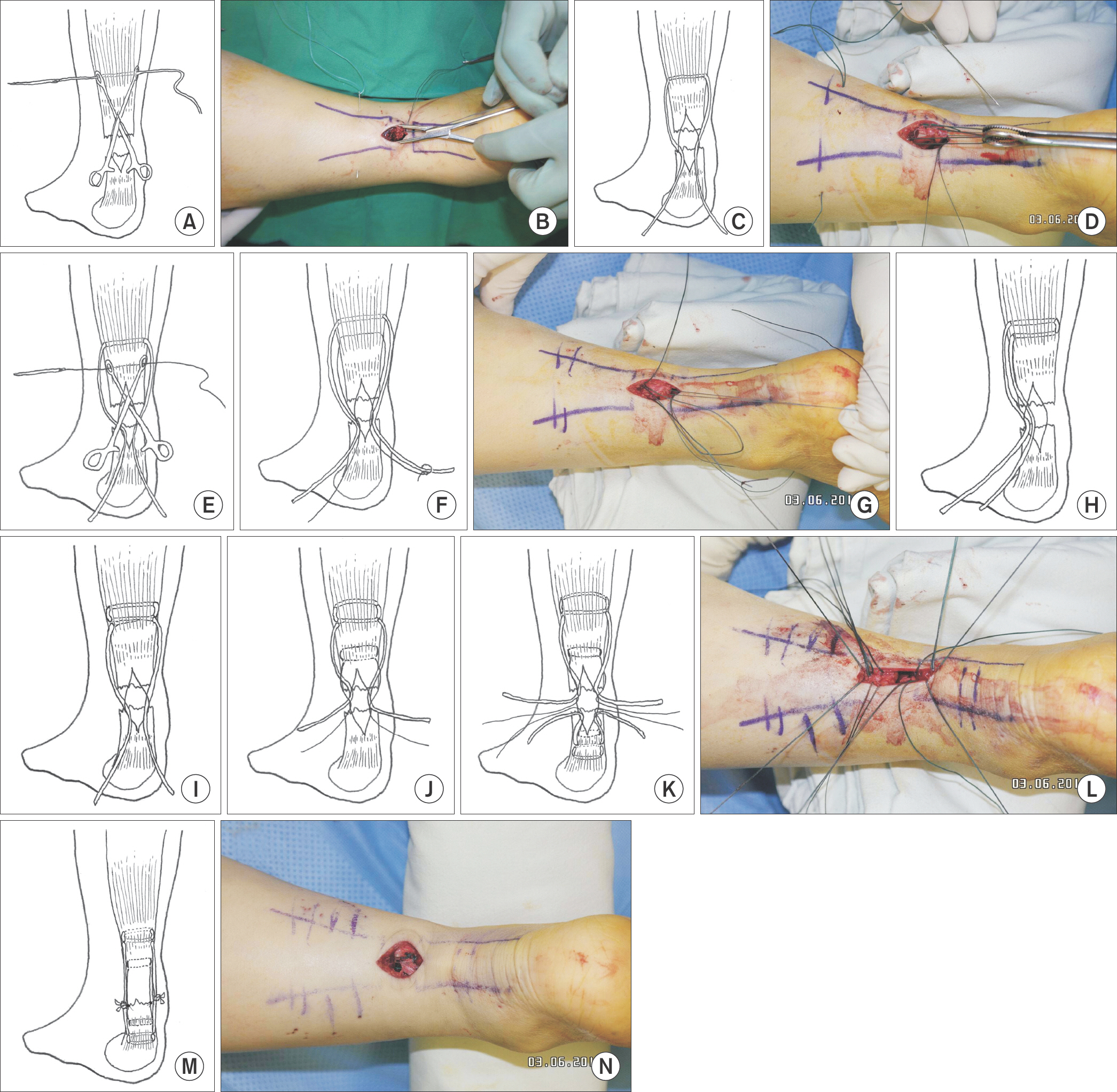J Korean Foot Ankle Soc.
2016 Jun;20(2):88-91. 10.14193/jkfas.2016.20.2.88.
Minimally Invasive Repair Technique of Achilles Tendon Using Sponge Forceps: A Technical Report
- Affiliations
-
- 1Department of Orthopedic Surgery, Gyeongsan Joongang Hospital, Gyeongsan, Korea.
- 2Department of Orthopedic Surgery, Yeungnam University Medical Center, Daegu, Korea. chpark77@naver.com
- KMID: 2219409
- DOI: http://doi.org/10.14193/jkfas.2016.20.2.88
Abstract
- Various minimally invasive repair techniques have been performed for acute Achilles tendon rupture. Despite this, it is difficult to use these techniques in common practice because of the necessity of special instruments. We propose a novel minimal invasive technique using sponge holding forceps, which are commonly used in the operating room for the acute Achilles tendon rupture.
Figure
Reference
-
1.Elliot RR., Calder JD. Percutaneous and mini-open repair of acute Achilles tendon rupture. Foot Ankle Clin. 2007. 12:573–82.
Article2.Nistor L. Surgical and non-surgical treatment of Achilles tendon rupture. A prospective randomized study. J Bone Joint Surg Am. 1981. 63:394–9.
Article3.Kakiuchi M. A combined open and percutaneous technique for repair of tendo Achillis. Comparison with open repair. J Bone Joint Surg Br. 1995. 77:60–3.
Article4.Assal M., Jung M., Stern R., Rippstein P., Delmi M., Hoffmeyer P. Limited open repair of Achilles tendon ruptures: a technique with a new instrument and findings of a prospective multicenter study. J Bone Joint Surg Am. 2002. 84:161–70.5.Ceccarelli F., Berti L., Giuriati L., Romagnoli M., Giannini S. Percutaneous and minimally invasive techniques of Achilles tendon repair. Clin Orthop Relat Res. 2007. 458:188–93.
Article6.Hsu AR., Jones CP., Cohen BE., Davis WH., Ellington JK., Anderson RB. Clinical outcomes and complications of percutaneous Achilles repair system versus open technique for acute Achilles tendon ruptures. Foot Ankle Int. 2015. 36:1279–86.
Article7.Klein W., Lang DM., Saleh M. The use of the Ma-Griffith technique for percutaneous repair of fresh ruptured tendo Achillis. Chir Organi Mov. 1991. 76:223–8.8.Sutherland A., Maffulli N. Naht der rupturierten Achillessehne. Oper Orthop Traumatol. 1998. 10:50–8.
Article9.Kong GM., Gwak HC., Kim JG. A comparative study of surgical treatment in the ruptured Achilles tendon: minimal incision and open repair. J Korean Foot Ankle Soc. 2012. 16:181–9.10.Mukundan C., El Husseiny M., Rayan F., Salim J., Budgen A. “Mini-open” repair of acute tendo Achilles ruptures--the solution? Foot Ankle Surg. 2010. 16:122–5.
Article
- Full Text Links
- Actions
-
Cited
- CITED
-
- Close
- Share
- Similar articles
-
- Minimal Invasive Surgery for Acute Achilles Tendon Rupture
- Treatment of Acute Achilles Tendon Rupture
- Management of Postoperative Complications Following Surgical Repair of Achilles Tendon Rupture
- Treatment of Massive Defect in Achilles Tendon with Tendon Allograft: A Case Report
- Heterotopic Ossification of a Partially Ruptured Achilles Tendon (A Case Report)


